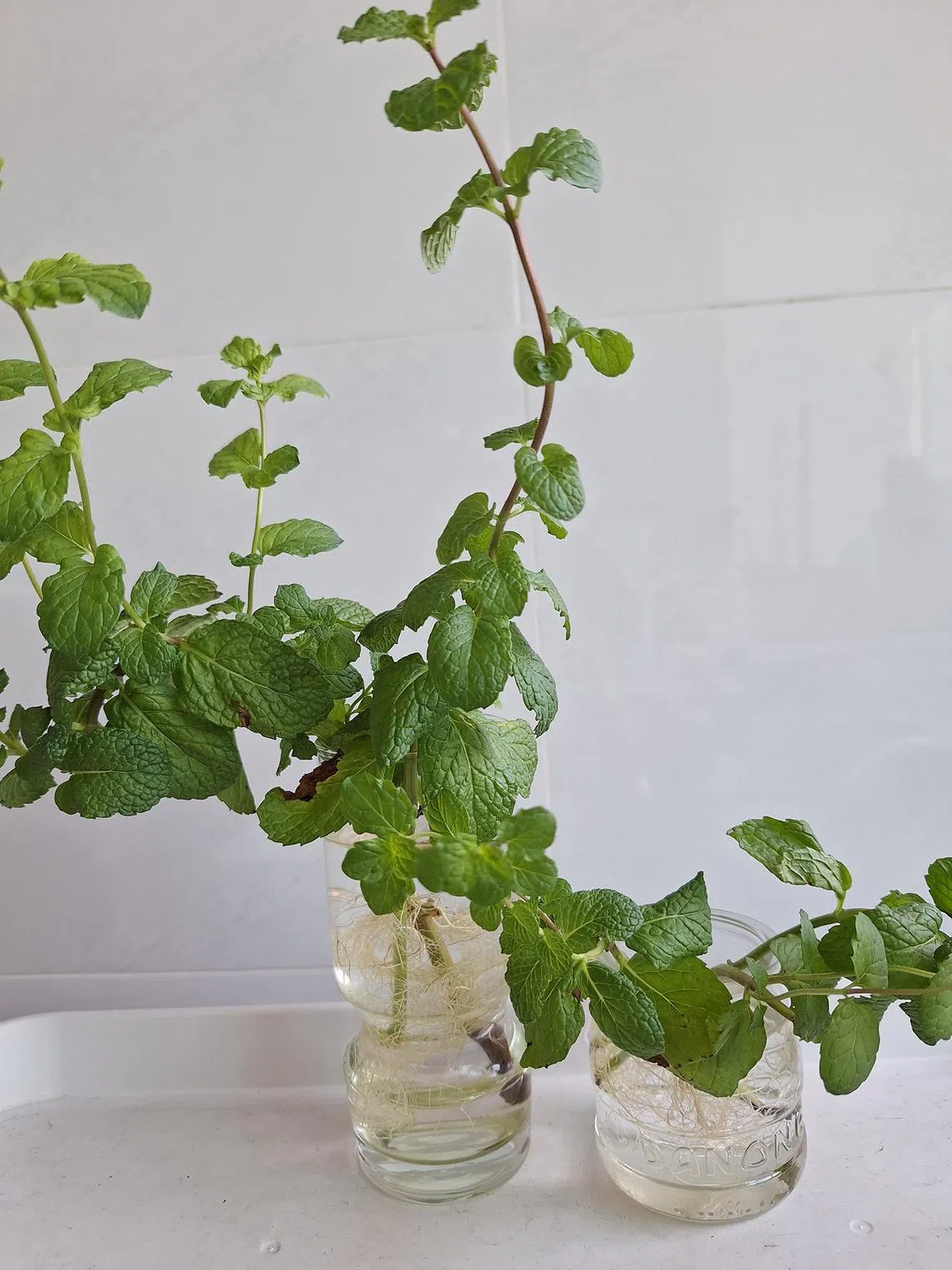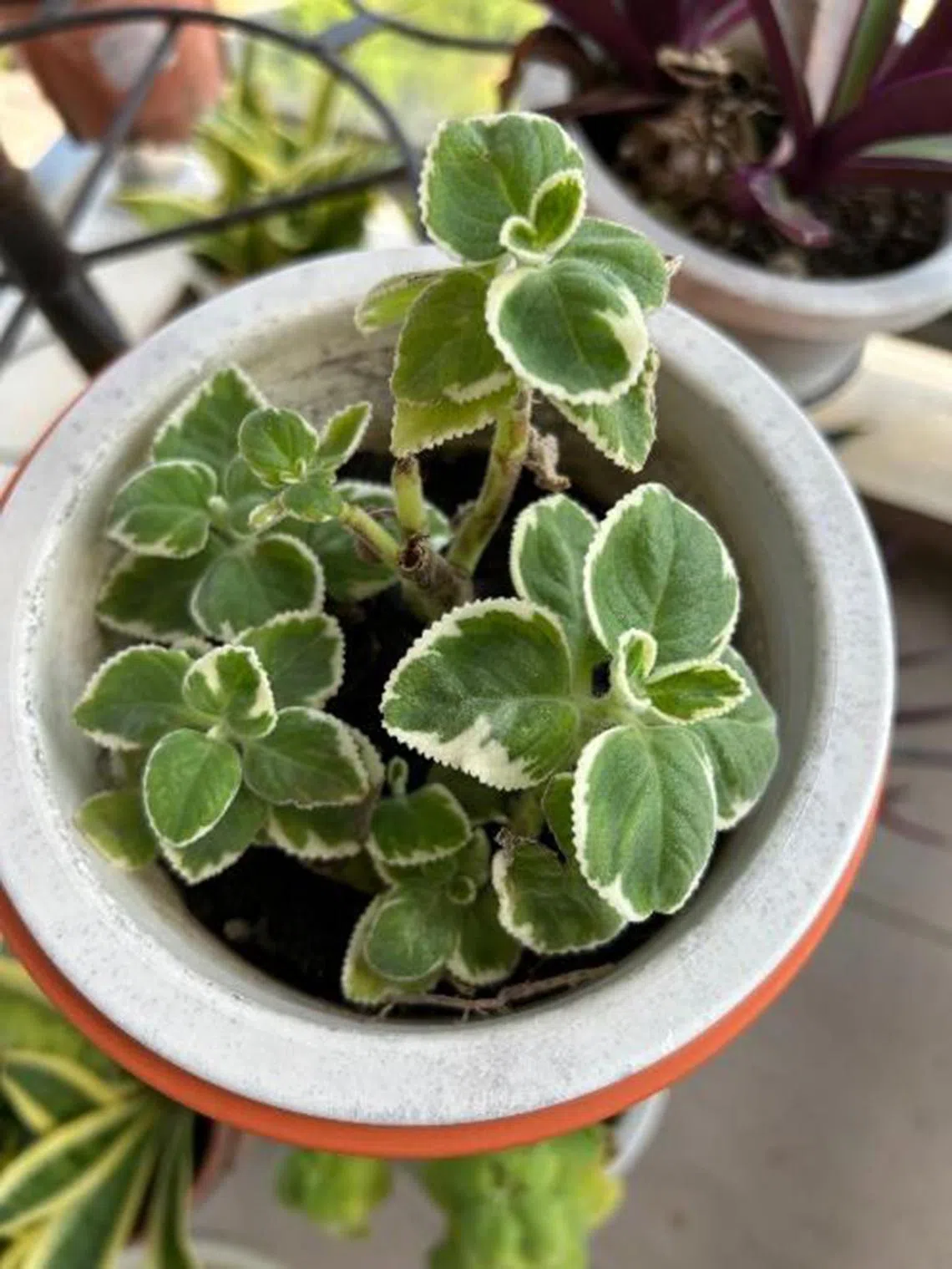Root Awakening: Guava can be grown in a large pot
Sign up now: Get ST's newsletters delivered to your inbox

Guava needs a sunny spot to thrive.
PHOTO: LILIAN QUEK
Wilson Wong
Follow topic:
Guava needs well-draining soil
What plant is this and how do I care for it?
Lilian Quek
The plant is likely the Guava (Psidium guajava), a common fruit tree that can be grown in a large pot. It needs a sunny spot and a well-draining growing medium to thrive.
Limau Purut plant infested with mites

Affected leaves will not recover and are usually not used for cooking, as they are not aesthetically pleasing.
PHOTO: GAN BOEY KEOW
In the past few months, my Limau Purut plant developed light patches on the leaves. What are the spots and are they contagious? Are the leaves still edible?
Gan Boey Keow
Your plant seems to have been infested by a type of microscopic mite that is invisible to the naked eye.
This pest appears to affect plants from the orange family (Rutaceae), such as the Curry Tree and other citrus plants.
Affected leaves will not recover and are usually not used for cooking, as they are not aesthetically pleasing.
Thorough and repeated applications of summer oil may help to manage the mite infestation and prevent further damage. The oil will suffocate the pests, and complete coverage is necessary for effective management.
Check plant for cricket damage

Ant powder can be used to deter crickets.
PHOTO: SEE SOO ENG

This appears to be a pot-bound plant that needs more room to grow.
PHOTO: SEE SOO ENG
There are flying insects around some of my plants, one of which has wilted leaves. Did the insects cause this? Also, roots seem to be emerging from nearby pots. What is wrong? Finally, can the soil of dead plants be reused?
See Soo Eng
The insect appears to be a cricket. In nature, crickets tunnel through soil, which can help to aerate the root zone of plants. However, in small pots with limited soil volume, excessive tunnelling can cause delicate roots to dry out. Crickets sometimes feed on the plants as well. Check your plant for signs of damage to be sure. Ant powder, which contains permethrin, may be sprinkled atop the soil to deter the pests. Keep treated pots out of the reach of children and pets.
The visible roots in the pot may be due to a pot-bound plant. Move it to a larger container to give it more room to grow.
The soil from dead plants can be reused, as soil is a finite resource. However, it has to be treated to get rid of pathogens and pests.
If there is not much soil, you can disinfect it by heating it in a convection oven. Heat it to a temperature above 80 deg C for at least 30 minutes, preparing small quantities each time so that the core temperature can rise throughout. Allow the soil to cool before using it.
Another way to salvage used soil is to leave the soil to dry out for several months after removing the infected plant parts. When reusing the soil, consider growing a plant of a different species to mitigate possible issues.
Mint can be grown hydroponically

Ensure the plants’ containers are opaque, as light exposure can lead to algae growth.
PHOTO: SINDY ANG
I have grown these mint cuttings in water for two weeks. Can I grow mint in water permanently? What nutrients can I add to the water?
Sindy Ang
Although plain water will not have enough nutrients for plant growth, mint can be grown in water if fertilised properly. You can buy liquid fertilisers for use in hydroponic systems, commonly called “A-B fertiliser solutions”.
When using such fertiliser solutions, ensure the containers are opaque, as light exposure can trigger algae growth.
Passive hydroponic set-ups are best for small plants. Larger plants need more dissolved oxygen, which can be difficult to provide without the use of an aquarium air pump. A lack of oxygen in the root zone can lead to root rot and plant decline.
Plant is variegated Indian Borage

This is a common herb in Singapore and can be used as a substitute for oregano.
PHOTO: YET TENG
What is the name of this plant? Is it edible?
Yet Teng
This plant is a variegated version of the Indian Borage (Coleus amboinicus). It is a common culinary and medicinal herb in Singapore, and is sometimes used as a substitute for oregano. The leaves can be boiled to yield a decoction that is said to relieve coughs.
Answers by Dr Wilson Wong, an NParks-certified practising horticulturist and parks manager. He is the founder of Green Culture Singapore and an adjunct assistant professor (Food Science & Technology) at the National University of Singapore.
Have a gardening query? E-mail it with clear, high-resolution pictures of at least 1MB, if any, and your full name to . We reserve the right to edit and reject questions.

